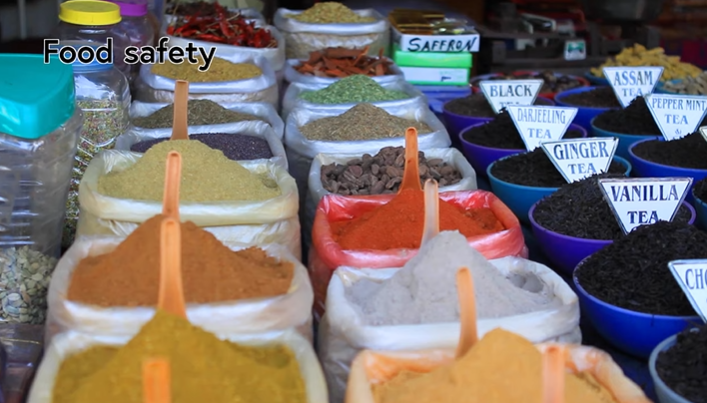What is Food Fraud and types of food fraud acts
We will be covering food ingredients, food packaging, and food finished products that are distributed throughout the supply chain and will discussing that what is Food Fraud and types of food fraud acts.
The food fraud development and implementation activities are managed by the leadership, and specific assurance activities are carried out at the food manufacturing plant level. The procedure directly and indirectly tackles issues such as adulteration, intentional mislabeling, over-run and unauthorized production, theft, and counterfeiting. It’s important to note that ideologically motivated intentional acts, such as food defense, are not included within the scope of this procedure.
The manufacturing plant site food safety manual of food manufacturing plants must include the following statement: “The management of the Food Fraud program is the responsibility of the quality & food safety team. Any problems that require support will be communicated through the foods quality Manager.
Objective of Food Fraud Risk Reduction
This outlines the process of assessing and mitigating potential food fraud vulnerabilities across the company. It involves implementing risk-based control measures, as applicable, to minimize any public health risks associated with vulnerabilities and ensure compliance with the requirements of the food safety management system.
Most known definitions related to Food Fraud reduction
Food: This includes anything that is intended for consumption as food or drink by humans or animals. It encompasses the ingredients used in food and beverages, food additives and color additives that are added during processing, dietary supplements, as well as packaging and other substances that come into contact with food.
Food Fraud: Food fraud is a general term that covers the intentional deception of misrepresenting food, food ingredients, food packaging, and finished products for the purpose of financial gain. Food fraud can take various forms, including substitution, addition, dilution, simulation, counterfeiting, and mislabeling – which involves making false or misleading statements about the product. Situations that may give rise to food fraud include product overruns, theft, diversion, and mislabeling.
Food Fraud Vulnerability Assessment: This refers to the process of gathering and analyzing information on possible risk factors for food fraud.
Food Fraud Mitigation Plan: This is a summary of the food fraud assessment that outlines the measures the company employs to minimize any public health risks associated with the identified food fraud vulnerabilities.
Vulnerability: Susceptibility or exposure to a food fraud risk is viewed as a potential weakness or inadequacy that could pose a risk to public health if left unaddressed.
Food Fraud Risk Reduction Procedure for Food ingredients
The Food Fraud Risk Reduction Procedure for ingredients is described in the following procedure, which consists of a seven-step process
- The process of selecting ingredients for evaluation
- Performing a vulnerability assessment
- Creating controls and devising a plan to mitigate food fraud
- The process of monitoring the implemented controls
- The act of verifying the effectiveness of the monitoring controls
- Undertaking corrective actions, if deemed necessary
- Conducting a re-evaluation of the food

Step-1: The process of selecting ingredients for evaluation
Evaluating food fraud vulnerabilities involves a diverse range of expertise. To accomplish this, a multidisciplinary team consisting of members from quality, procurement, production, and warehousing departments should be established. The team should convene on a regular basis, as potential food fraud risks are constantly evolving, and ongoing assessment is necessary to stay current with supplier and food developments, scientific and technical advancements, emerging issues, and known vulnerabilities. The Food Protection Plan is a two-phase approach for selecting ingredients. The first phase involves identifying and evaluating ingredients with a history of food fraud. The second phase focuses on selecting and evaluating ingredients that are new or unanticipated for food fraud risks. The results of the assessment are useful in prioritizing food categories with the highest vulnerability risk.
Step-2: Performing a vulnerability assessment
Although all types of food are susceptible to food fraud, not all of them pose a public health or economic risk. The vulnerability assessment for food fraud identifies potential issues or weaknesses in the supply chain, highlighting foods that are at risk, and enabling the implementation of appropriate control measures. When conducting the vulnerability assessment, it is important for food exporters to consider the legislative requirements of the country in question. There are two types of assessments available: full assessment and initial screening. The appropriate type should be chosen based on the situation.
Step 3: Creating controls and devising a plan to mitigate food fraud
The Food Fraud Mitigation Plan utilizes the vulnerability assessment results (likelihood and consequence worksheets) to identify necessary control measures to reduce the vulnerability level from high to low risk. This plan includes Prevention and Deterrence, Detection, and Mitigation sections that specify: (1) the control measures, (2) the responsible party and the frequency of monitoring, (3) the frequency of monitoring control verification, and (4) the corrective actions and responsible parties for verifying closure in case of non-compliance.
Step 4: The process of monitoring the implemented controls
Monitoring plays a crucial role in evaluating whether the implemented control measures effectively mitigate risks. It is essential to specify what will be monitored, who will be responsible for monitoring, and how frequently monitoring will occur. If the control measure requires monitoring by the plant or QC, they will communicate the plant’s responsibility to fulfill the monitoring requirements.
Step 5: The act of verifying the effectiveness of the monitoring controls
Verification is an activity that confirms compliance with monitoring activities and is performed independently by an individual who is not involved in the monitoring activity. If control measures require verification by the plant, the QC or equivalent will communicate the plant’s responsibility.
Step 6: Undertaking corrective actions, if deemed necessary
If there is a failure in monitoring or verification, it is important to take corrective action. The plant is responsible for communicating any non-conformances to QC or an equivalent authority. The corrective action may involve reevaluating the food and supplier to determine if they can continue supplying the Company. For instance, if testing results from an outside laboratory reveal that the authenticity test fails to meet Company specification, appropriate action such as food traceability and holding, recall, and decision on revoking an approved supplier, and reevaluation of similar foods may be taken.
Step 7: Conducting a re-evaluation of the food
A reassessment of vulnerability should be conducted at least once a year or when there is new information that may alter the level of vulnerability. The review may encompass various aspects, including, but not restricted to: a. Contemplation of buying a new raw material b. Alteration in the country of origin c. Change in the supplier d. Changes in the financial status of the supplier e. Variations in availability, such as seasonal shortage f. Emergence of new risk g. Advancements in scientific information associated with the food
Most Common types of food fraud acts
Following are most common food frauds on food products.
Adulteration:
The finished product contains a fraudulent component, substance, or impurity.
Mislabeling
The process of falsely claiming information on packaging for financial benefit.
Over-run
A genuine product is manufactured beyond the agreed-upon production limit.
Theft
Genuine products that are stolen and sold as if they were legitimately obtained.
Diversion
The sale or distribution of legitimate products outside of intended markets e.g Relief food redirected to markets where aid is not required
Simulation
The illegitimate product is created to resemble the legitimate product, but not an exact replica.
Counterfeiting
Food counterfeiting involves the imitation of a food product’s brand name, packaging design, recipe, and processing methods for the purpose of gaining economic benefits.



